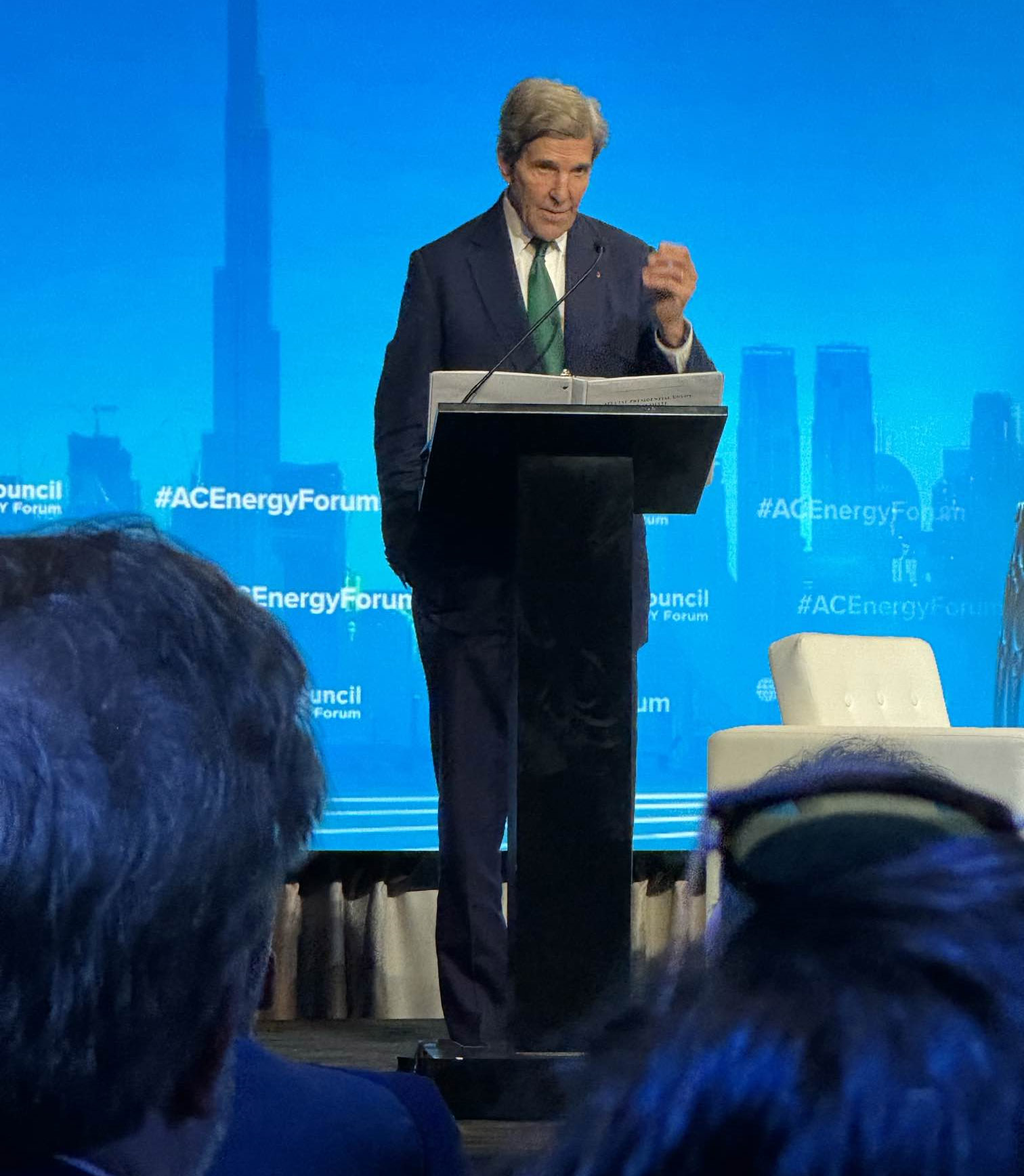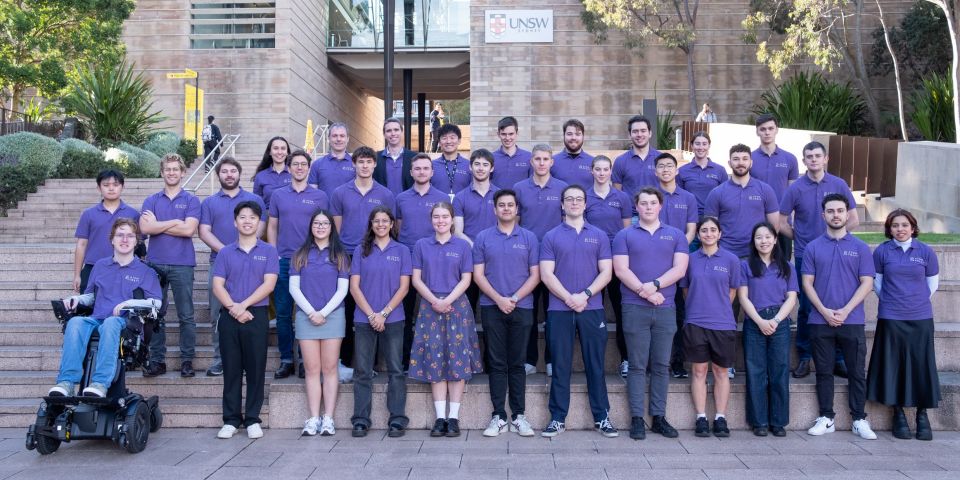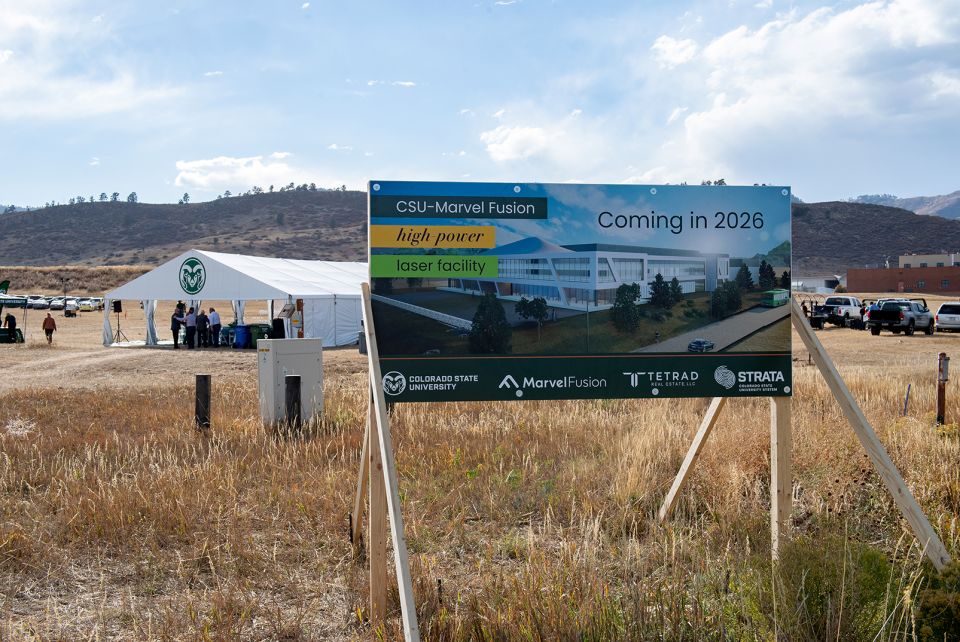Fusion for Peace? “Almost to the day 70 years ago, President Eisenhower delivered an historic Atoms for Peace speech,” Kerry said. “I’m not mentioning that because you're in for an historic speech about atoms, or fission versus fusion. But I am here to say that the idea of urging nations to come together to harness the power of science for peaceful pursuits and benefit mankind—humankind generally—clearly is more than a worthy goal. It's the highest aspiration, if you will, of diplomacy, of foreign policy, of strategic interests. . . . I am here to try to again harness the power of fundamental physics and human ingenuity in response to a crisis.”
Kerry laid out the case for action to combat climate change before talking about the new interest in fusion energy. “There is potential in fusion to revolutionize our world and to change all of the options that are in front of us and provide the world with abundant and clean energy without the harmful emissions of traditional energy sources,” he said. “Science clearly tells us, without any question whatsoever, the cause of this crisis. . . . It's about math and physics telling us that it's emissions, it's the way we burn fossil fuels without capturing the emissions. And we have two options—either capture the emissions or don't burn it.
“Fusion, I believe, can be a critical piece of our energy future—obviously along with wind and solar and nuclear fission and geothermal and other forms of energy—but the cadence of new and exciting fusion announcements has obviously increased over time. New startups are exploring exciting new modalities for fusion energy. . . . [W]e are edging ever closer to a fusion-powered reality, and at the same time, yes, significant scientific and engineering challenges exist. Careful thought and thoughtful policy are going to be critical to be able to navigate this critical juncture.”
Five goals: The administration’s five goals, as described in the OSTP announcement and captured in brief here, are as follows:
- R&D and infrastructure: “We plan to build upon our existing bilateral partnerships and multilateral projects, such as ITER, while exploring new cooperative opportunities to accelerate commercial fusion goals, protect joint innovations, and impart equitable benefits to collaborators. In addition, the United States intends to engage with global partners to help resolve remaining research challenges through collective action.” The partnerships would promote “cooperation and competition” with “strong intellectual property protections and enforcement.”
- Fusion marketplace growth: “Fusion developers intend to export fusion facilities globally. Global engagement is necessary to understand different commercial landscapes. The United States intends to work with global partners to facilitate fusion’s market entry across these different landscapes.” That will happen in part by “identifying supporting technologies, manufacturing capabilities, and infrastructure that are essential for fusion energy development; . . . exploring common frameworks for benchmarks and standards; [and] enabling multinational companies to benefit and develop positive applications from key technologies developed outside their home country.”
- Regulatory coordination: “For fusion to be a global commercial industry, it must be possible for companies to export fusion technologies and fuel supplies. It will be beneficial to coordinate internationally as individual nations develop their domestic fusion regulatory frameworks, consistent with the highest standards of safety, security, and nonproliferation. The United States intends to promote early international coordination on regulatory frameworks and policy implementation to pave the way for timely commercial fusion deployment.” That would be done in part by “comparing experiences with key partner countries and international organizations to establish common positions on technical and policy issues to support the harmonization of fusion regulatory and export control frameworks.”
- Global workforce: “The global nature of knowledge and talent in R&D for fusion requires developing and expanding pathways to strengthen the global talent pipeline and to support pathways that enable talent mobility and flow into nations aspiring to deploy fusion energy.” The United States plans to address workforce needs in part by sharing knowledge on best practices, educational resources, and methods to monitor and assess outcomes; facilitating student and professional exchanges; building a diverse and inclusive fusion workforce; and deploying modern training programs through public-private partnerships that support short-term and long-term talent development.
- Public education and engagement: “As fusion is a new, complex technology still in the development phase, proactive public engagement will be essential to build public understanding, trust, and a social license for fusion development, demonstration, and deployment as a clean and abundant energy source. Developing, demonstrating, and deploying fusion energy must center on the core goals of protecting public health, safety, and the environment. The United States intends to work with partner countries to share public engagement activities and identify best practices for discussing both the benefits and risks of fusion energy.”









